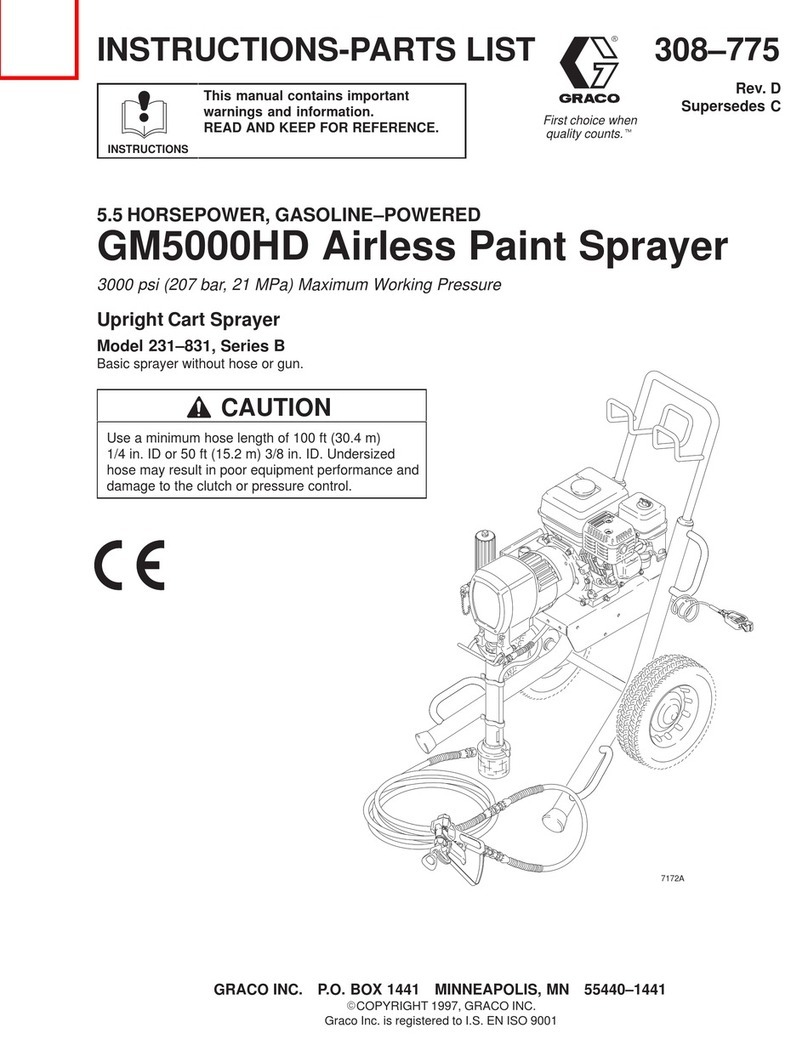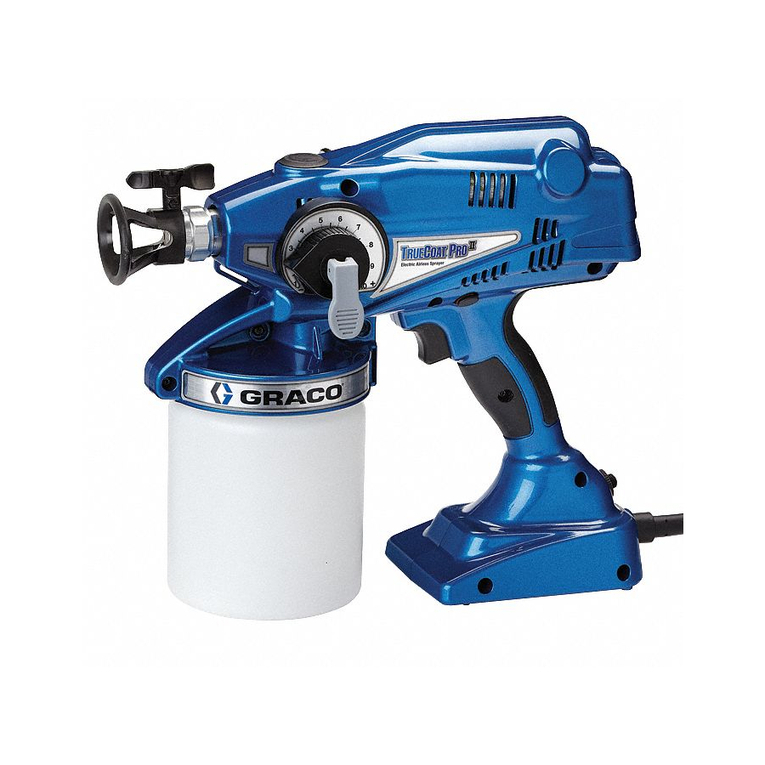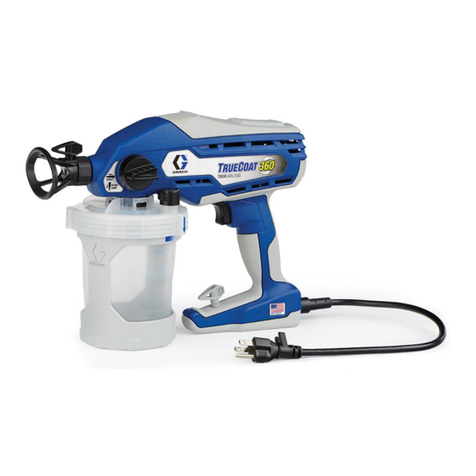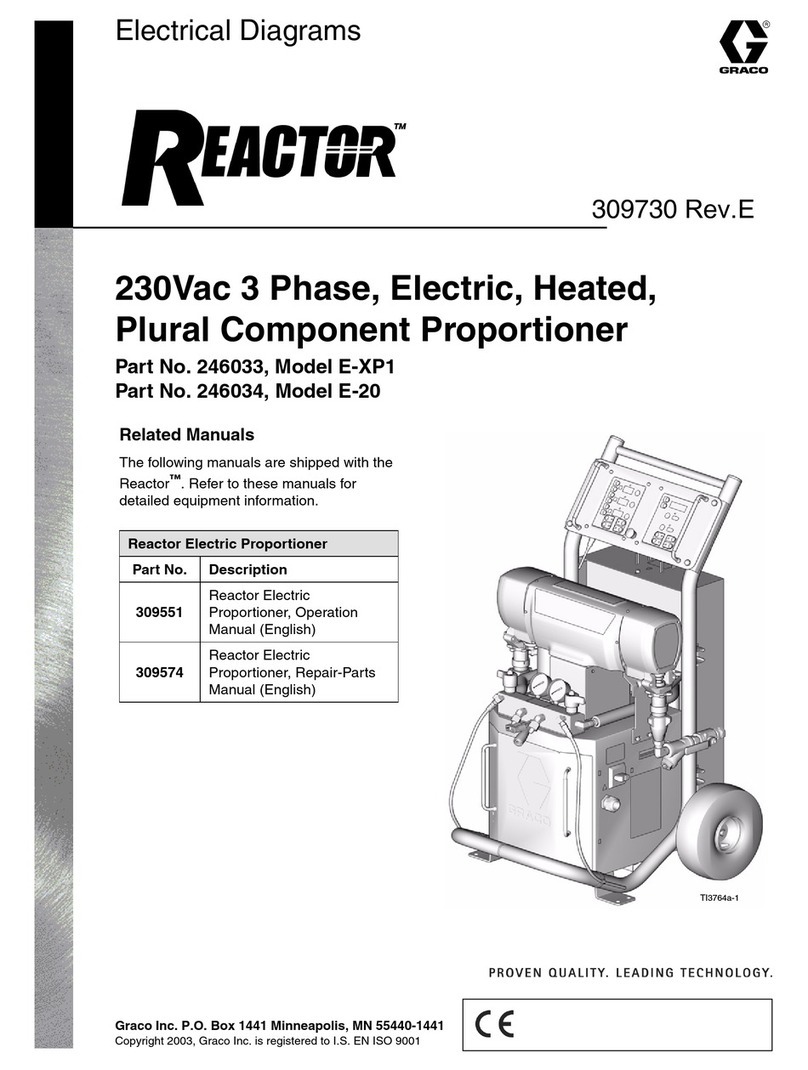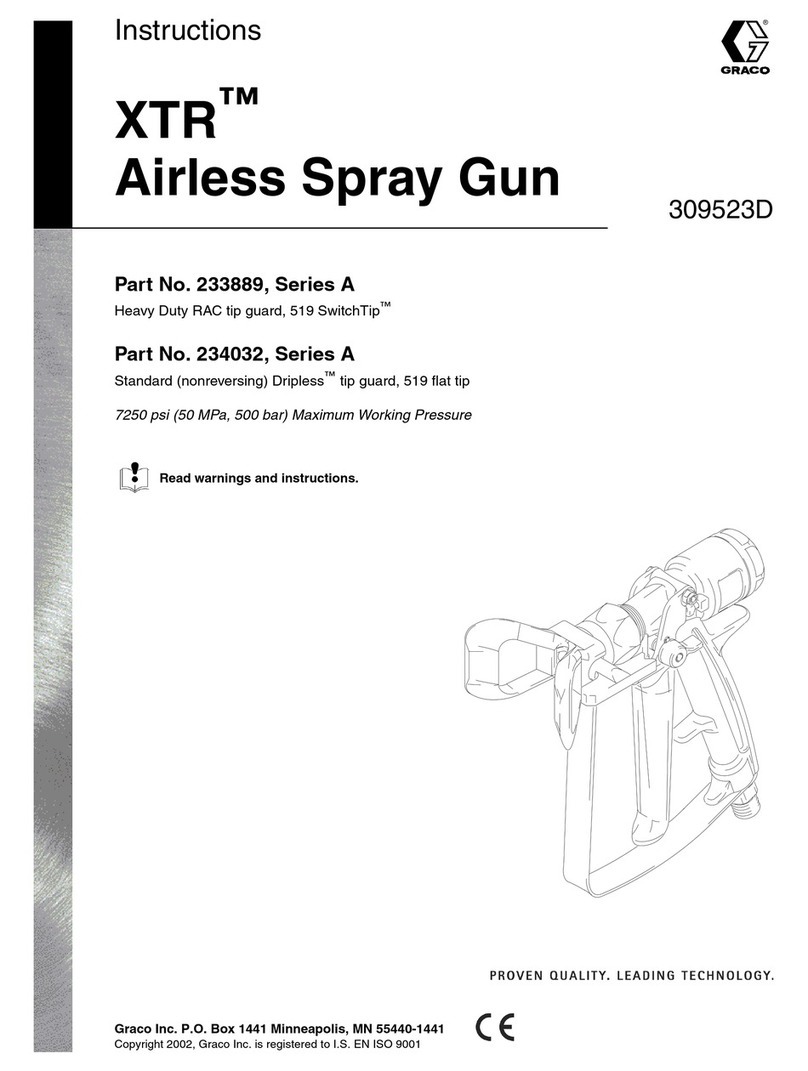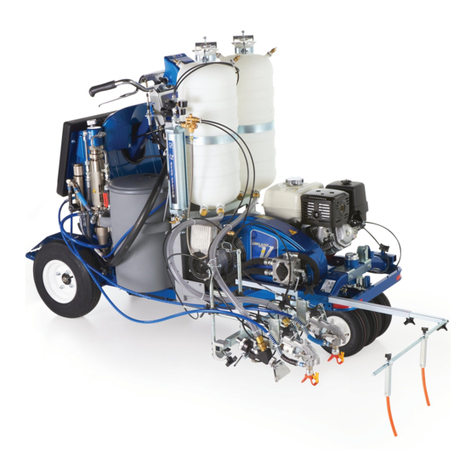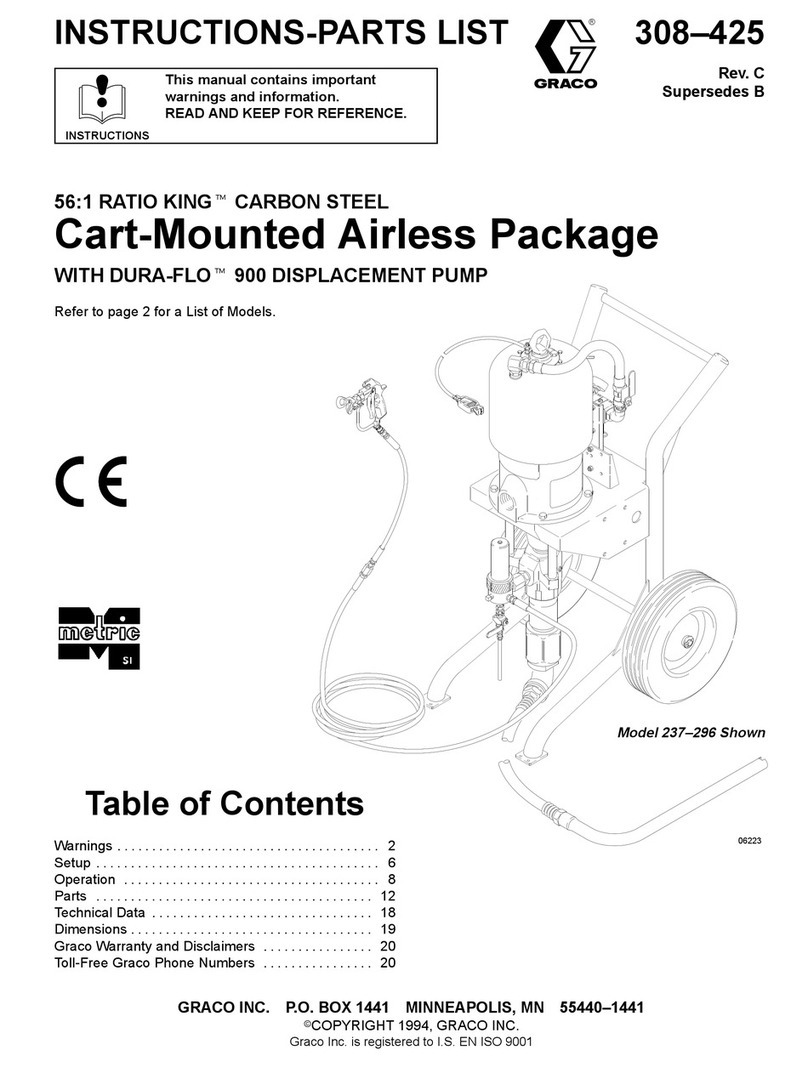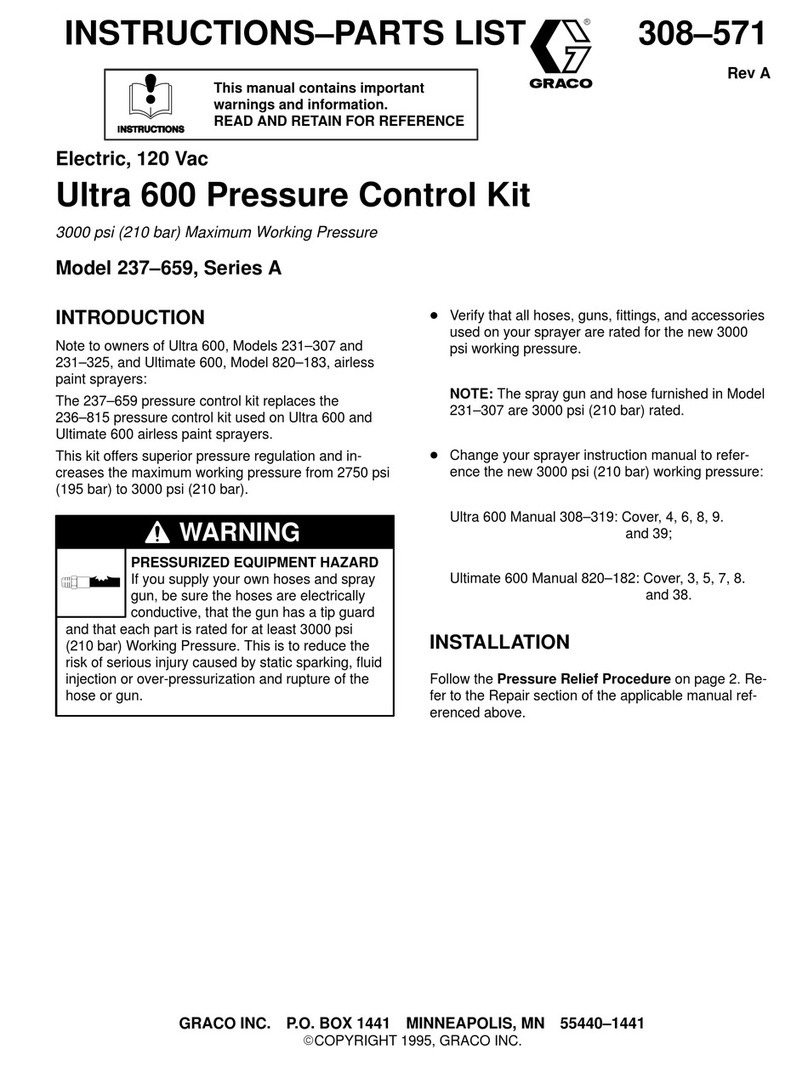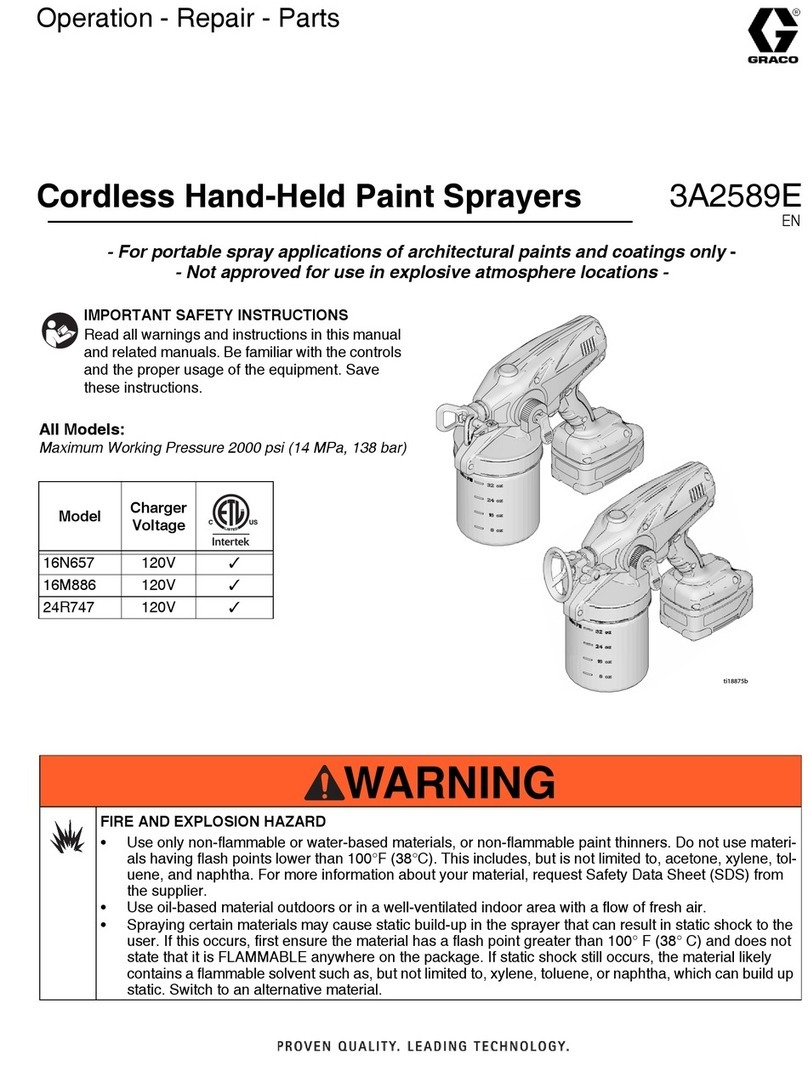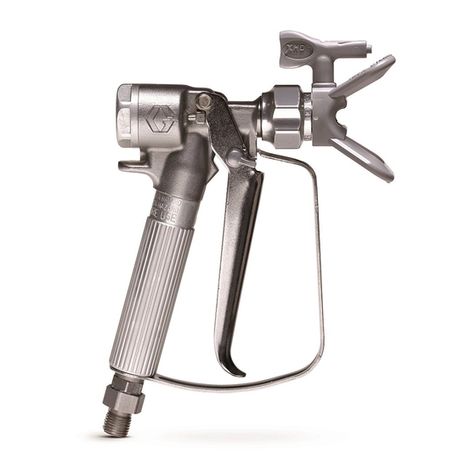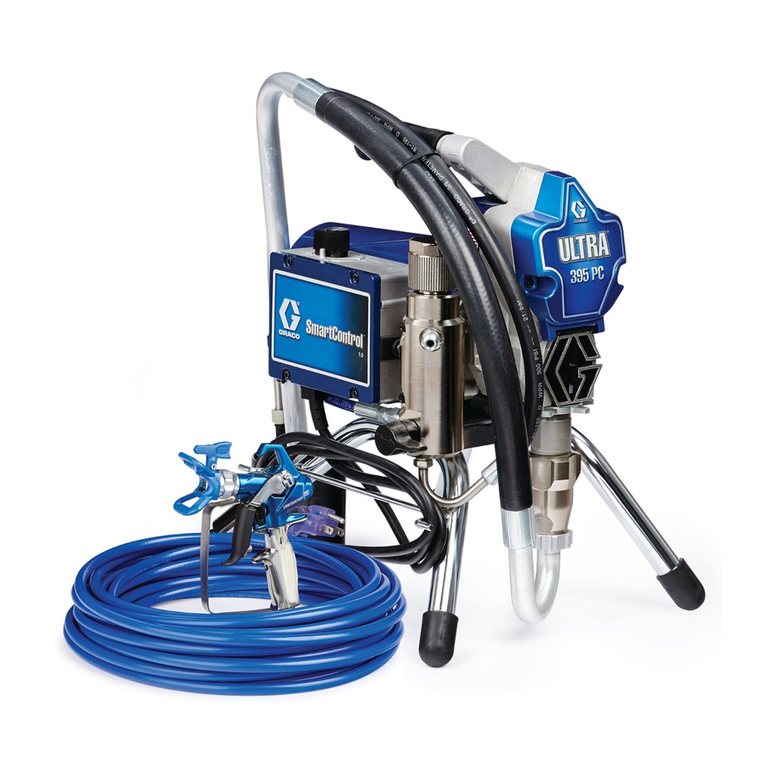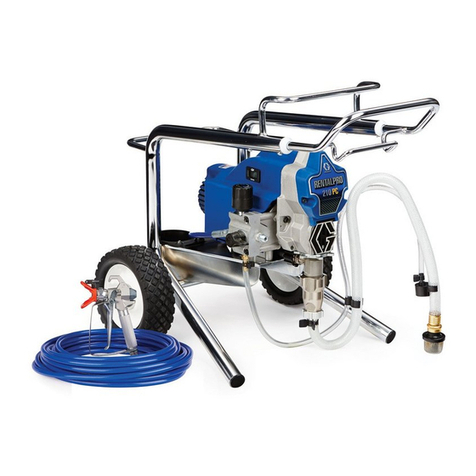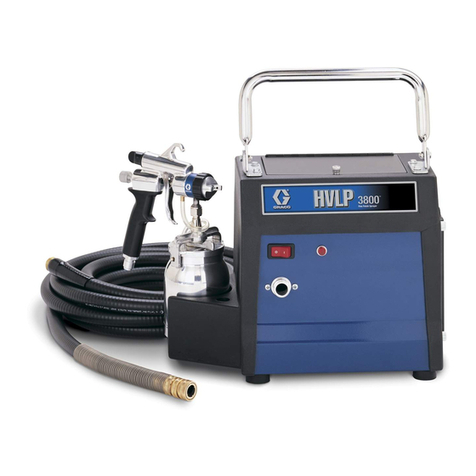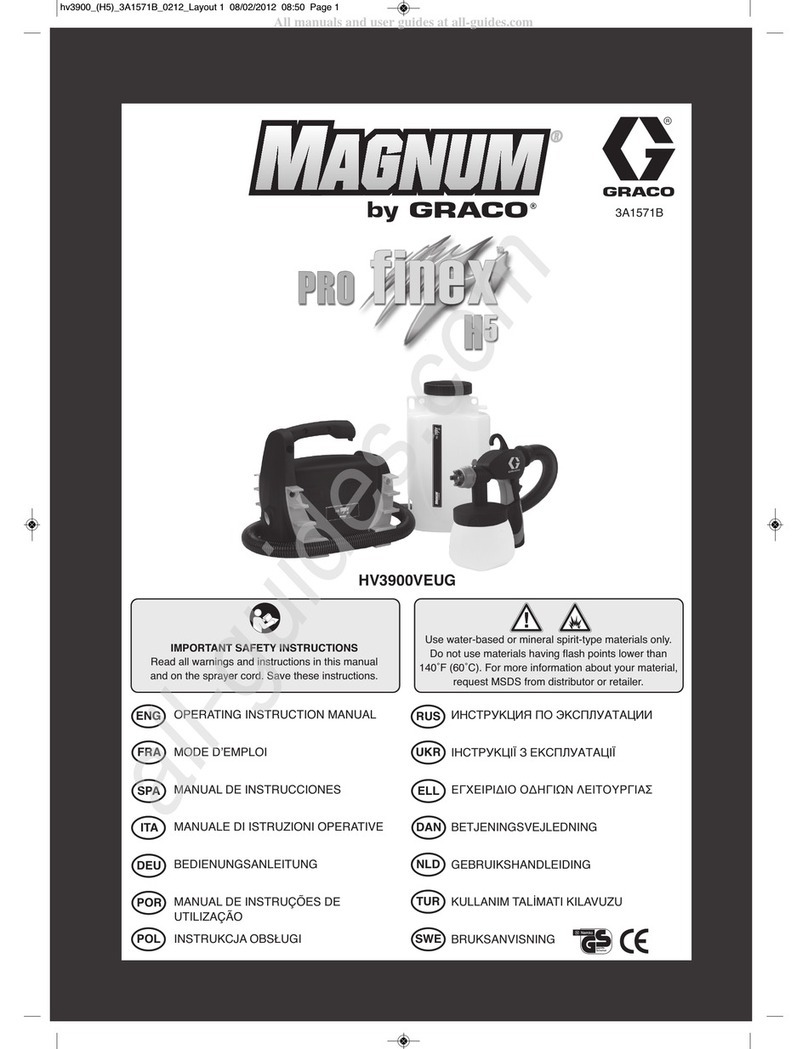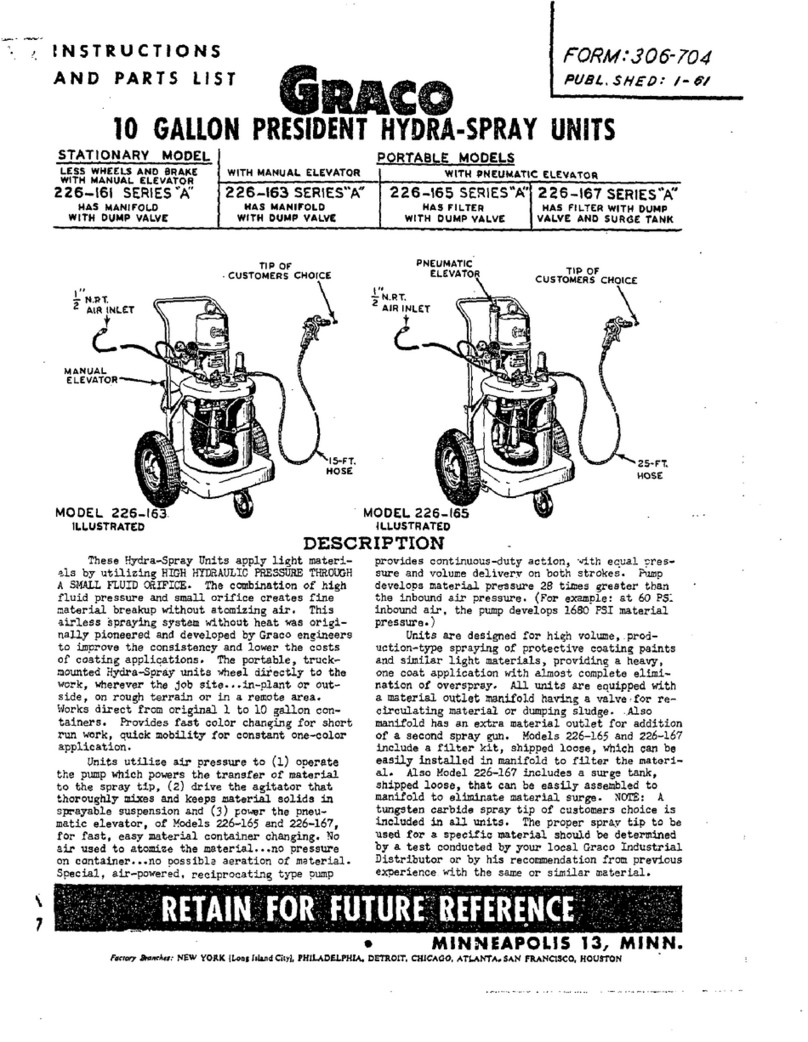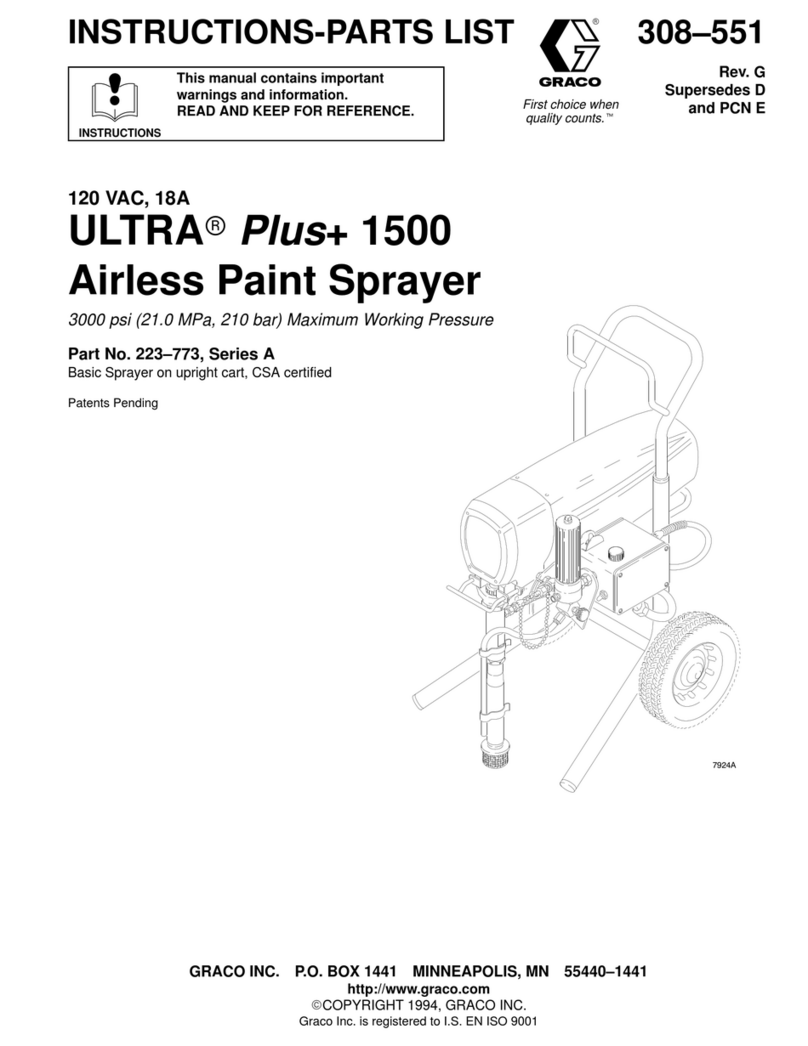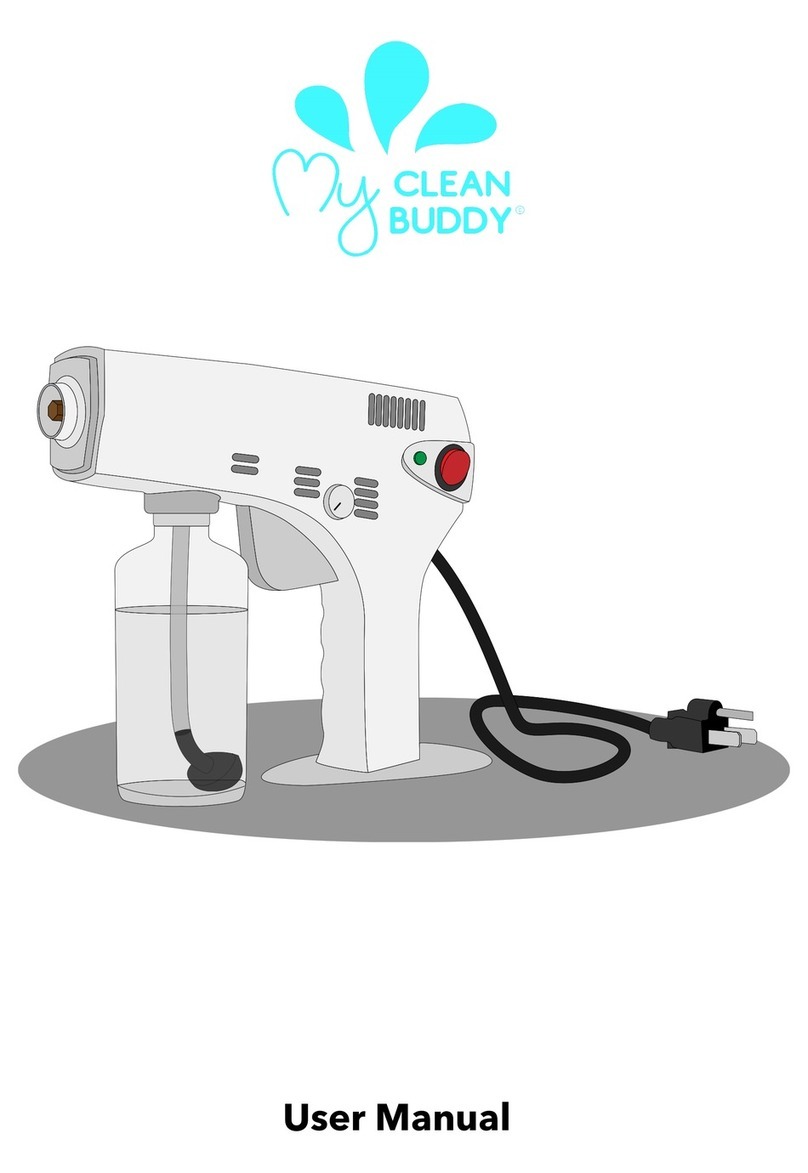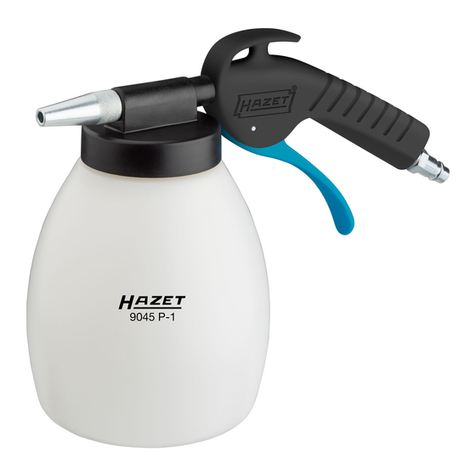
INJECTION HAZARD
Spray
from the gun, leaks or ruptured components can inject fluid into your body and cause ex
-
tremely serious injury
, including the need for amputation. Fluid splashed in the eyes or on the skin
can also cause serious injury
.
Fluid injected into the skin is a serious injury
. The injury may look like just a cut, but it is a serious
injury
. Get immediate medical attention.
Do not point the gun at anyone or at any part of the body
.
Do not put your hand or fingers over the spray tip.
Do not stop or deflect leaks with your hand, body
, glove or rag.
Do not “blow back” fluid; this is not an air spray system.
Always have the tip guard and the trigger guard on the gun when spraying.
Check the gun dif
fuser operation weekly
. Refer to the gun manual.
Be sure the gun trigger safety operates before spraying.
Lock the gun trigger safety when you stop spraying.
Follow the
Pressure Relief Procedure
on page 12 if the spray tip clogs and before cleaning,
checking or servicing the equipment.
T
ighten all fluid connections before operating the equipment.
Check the hoses, tubes, and couplings daily
. Replace worn or damaged parts immediately
. Do
not repair high pressure couplings; you must replace the entire hose.
Fluid hoses must have spring guards on both ends, to help protect them from rupture caused by
kinks or bends near the couplings.
WARNING
WARNING
Liquids
can be injected into the body by high
pressure airless spray
or
leaks – especially hose leaks.
Keep
body clear of the nozzle. Never stop leaks with any part of the
body.
Drain all pressure before removing parts.A
void accidental trig
-
gering
of gun by always setting safety latch when not spraying.
Never spray without a tip guard.
In case of accidental skin injection, seek immediate
“Surgical
T
reatment”.
Failure to follow this warning can result in amputation or serious
injury.
FIRE
AND
EXPLOSION HAZARD
SKIN INJECTION
HAZARD
READ AND UNDERSTAND ALL LABELS AND INSTRUCTION MANUALS BEFORE USE
Spray
painting,
flushing or cleaning equipment with flammable liq
-
uids
in confined areas can result in fire or explosion.
Use
outdoors or in extremely well ventilated areas. Ground equip
-
ment,
hoses, containers and objects being sprayed.
Avoid
all ignition sources such as
static electricity from plastic drop
cloths,
open flames
such as pilot lights, hot objects such as ciga
-
rettes,
arcs from
connecting or disconnecting power cords or turn
-
ing
light switches on and off.
Failure
to follow this warning can result in death or serious injury
.
NOTE: This
is an example of the DANGER label on your sprayer
. This label is available in other languages,
free of charge.
